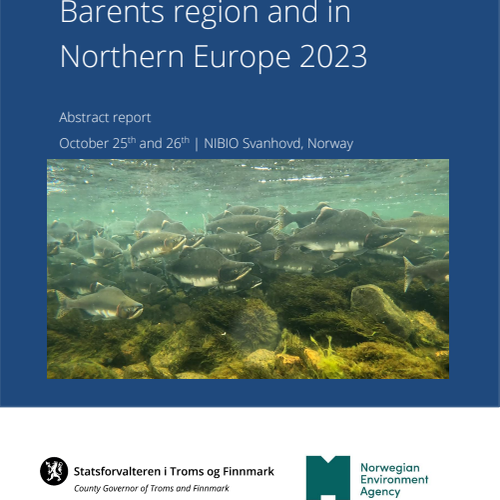11 December 2023 news
Pink salmon (Oncorhynchus gorbuscha) have been increasing drastically in numbers in Norwegian rivers in odd-numbered years since 2017. The increase has been greatest in eastern Finnmark county, but large numbers occurred in rivers as far south as Nordland County in 2023. Topics defined as problematic in the risk assessment by the Norwegian Scientific Committee for Food Safety (increased nutrients in water, transfer of marine derived nutrients to aquatic and terrestrial food-webs) were investigated in Vesterelva in 2017 and 2022, and in Grense Jakobselva in 2022 and 2023. Transferral of marine derived nutrients was studied by stable isotope analysis (δ13C, δ15N and δ34S), in a BACI- design (before/after – control/impacted), and Grense Jakobselv was chosen for further studies as this river did not have any pink salmon removal efforts in 2023.
Water, primary producers, benthic and terrestrial invertebrates, and native fish have been sampled in order to investigate how the nutrients from pink salmon carcasses and eggs are incorporated into the food webs and their impacts on invertebrate community composition. Native young salmonids have been demonstrated to feed on pink salmon eggs, and the remaining analysis will be performed in 2023/2024. In addition, cameras were placed on the river shore, documenting terrestrial and sub-aquatic vertebrate scavengers on pink salmon carcasses.
Increasing numbers of pink salmon have also been documented in the fjords around Svalbard, where Arctic charr (Salvelinus alpinus) is the only naturally occurring salmonid. Dietary overlap between Arctic charr and pink salmon along the coast during summer was moderately high, where both species had strong associations with intertidal invertebrates in areas where direct comparisons were possible (Kongsfjorden/Krossfjorden). Arctic charr is a more generalist feeder, while pink salmon is more of a dietary specialist. During summer 2023, 12 pink salmon were tagged with acoustic transmitters and their movements were recorded in Isfjorden on Svalbard on submerged mounted hydrophones. The tagged pink salmon showed a wide range of behaviours, where some individuals were only recorded around the tagging area close to river mouths, while others migrated across the entire fjord system. None of the tagged pink salmon were registered entering lakes in Isfjorden, although pink salmon is often registered in Svalbard lakes later in the autumn.
***
See report from the pink salmon seminar: Pink salmon seminar 2023 - Abstracts (statsforvalteren.no)


